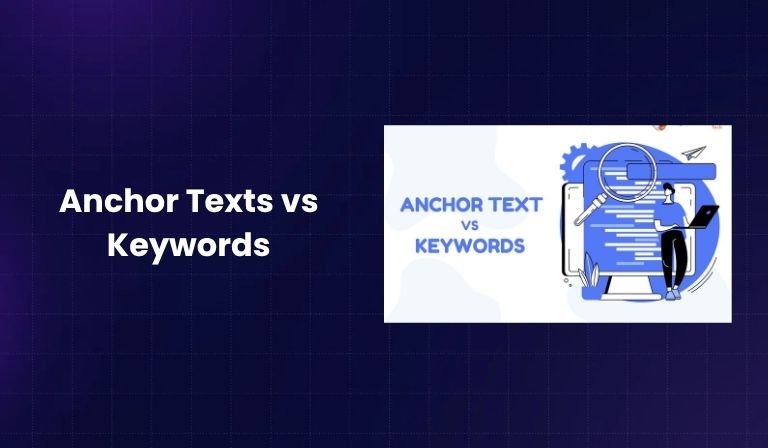One of the most common questions we hear from new clients is: “Aren’t anchor texts and keywords the same thing?” On the surface, they might appear similar. Both show up in content. Both influence search rankings. But the truth is—they serve very different purposes in SEO.
Not understanding the difference between keywords and anchor text can lead to poor optimization, low rankings, or even penalties from Google.
In this guide, we’ll break down what anchor text means, how it compares to keywords, how they both affect SEO, and how to use them strategically to grow your visibility online.
Keywords vs Anchor Text: What’s the Difference?
What Are Keywords?
Keywords are the exact words or short phrases that users type into Google when they’re searching for something.
Examples include:
- “weather today”
- “best pizza in Chicago”
- “affordable wedding photographer”
SEO experts use keyword research tools to find high-volume, low-competition keywords, then strategically add them to content to improve rankings.
You’ll find keywords in:
- Page titles
- Meta descriptions
- Headers (H1, H2)
- Body text
- Alt tags
Keywords help search engines understand what your content is about and match it with searchers’ queries.
What Are Anchor Texts?
What are anchor texts? In simple terms, anchor texts are clickable text inside a hyperlink. When you click it, it takes you to another page—either on the same site (internal link) or a different site (external link).
- Anchor text meaning: It’s the visible, hyperlinked text that directs a user to another resource.
- What’s anchor text used for? Guiding users, improving user experience, and helping search engines understand link context.
Example:
In the sentence, “Learn more about SEO best practices,” the words “SEO best practices” could be an anchor text linking to a relevant article.
What Are Anchor Words?
Anchor words are the individual words that make up the anchor text. For example, in the anchor text “best digital cameras,” the anchor words are “best,” “digital,” and “cameras.” Each word contributes to how Google interprets the context and relevance of the linked page.
Knowing what are anchor words and using the right combinations can make a huge difference in your site’s visibility.
The Relationship Between Anchor Text and SEO
Anchor text plays a major role in how Google ranks content. When you hyperlink a keyword-rich phrase (e.g., “best SEO tools”), you’re giving both the reader and Google a clue about what the linked page contains.
In fact, Google has said anchor text helps its algorithm understand the subject matter of the destination page.
Using relevant, natural anchor text:
- Improves crawlability
- Passes link equity (ranking power)
- Builds contextual relevance
- Enhances user experience
But use caution—over-optimization of anchor text can raise red flags and lead to penalties.
Do Keywords and Anchor Text Carry the Same Weight in Google?
This is a tricky one. Google’s algorithm is complex and ever-evolving, so it’s hard to say definitively.
However:
- Keywords help Google determine what your page is about.
- Anchor text helps Google determine what another page is about.
Because anchor text provides external validation, some SEO professionals argue that anchor texts can have even more influence on how a page is ranked—especially when used in backlinks.
That said, Google favors natural language and diversity, not keyword-stuffing in either form.
Why Anchor Text Is So Important to SEO
Here’s why anchor text matters:
- It gives context to both readers and search engines.
- It guides visitors to relevant pages.
- It helps build topic authority.
- It signals trust when linking to credible sources.
- It improves internal linking, which is crucial for on-page SEO.
Think of anchor text as a road sign: it tells people and search engines what to expect when they click a link.
The Different Types of Anchor Text (with Examples)
Understanding the different anchor text types can help you diversify your link profile and avoid penalties.
1. Exact Match
- The anchor text is the exact keyword of the page it links to.
- Example: Linking “men’s silk ties” to a product page for men’s silk ties.
- Great for SEO—but use sparingly to avoid over-optimization.
2. Partial Match
- Contains a variation of the keyword.
- Example: “Shop luxury silk ties for men” linking to the same silk ties page.
- More natural and less risky than exact match.
3. Branded
- Uses the brand name as anchor text.
- Example: “iStorage” linking to a self-storage brand site.
- Safe and highly recommended.
4. Naked URL
- Uses the full web address as anchor text.
- Example: https://www.istorage.com/
- Clean, straightforward, and spam-resistant.
5. Generic (Random)
- Uses non-descriptive phrases like:
- Click here
- Learn more
- Visit site
- Requires strong contextual clues in surrounding text.
6. Related
- Uses terms related to the keyword, without repeating it.
- Example: “Men’s fashion tips” linking to a page about men’s ties.
- Helps diversify your anchor profile and stay penalty-free.
7. Image Anchor
- Uses an image as a hyperlink.
- Alt text becomes the anchor text for SEO.
- Visually appealing but must be accessible and well-labeled.
Optimizing SEO with Keywords
Effective SEO starts with smart keyword research.
Use tools like:
- Google Keyword Planner
- Ubersuggest
- Ahrefs
- SEMRush
These tools help identify:
- Keyword search volume
- Keyword difficulty (KD)
- Cost-per-click (CPC)
Where to Place Keywords:
- Title tags
- Meta descriptions
- H1, H2, H3 headers
- Product/service descriptions
- URL slugs
- Blog posts
- Image alt text
The key is natural placement. Never force a keyword.
Best Practices for Anchor Text and SEO
To maximize your SEO impact, follow these anchor text best practices:
Use Anchor Text That Adds Value
Only use anchor text that enhances user experience and clearly communicates the value of the linked page.
Don’t Overuse Anchor Text
Too many links—especially with the same anchor—can look spammy. Mix it up!
Position Anchor Text Strategically
Place anchor text in parts of your content that get attention (above the fold, near H2s, inside bulleted lists).
Relevance Is Key
Anchor text must match the topic of the destination page. Misleading anchors = user confusion = SEO penalties.
Diversify Your Anchor Text Profile
Mix different types of anchor text to keep your profile natural and penalty-proof.
Recommended Anchor Text Distribution
While there’s no “perfect” ratio, many SEO experts recommend this breakdown:
- Branded Anchor Text – 50%
- Naked URLs – 20%
- Page Titles – 20%
- Generic/Random – 2–5%
- Exact Match – 2–5%
- Partial Match – 2–5%
Use a tool like Ahrefs or SEMrush to analyze your anchor text profile.
Beginner SEO Tips: Putting It All Together
Understanding what are anchor texts and keywords is just the beginning. Now you need to apply that knowledge.
Try These Steps:
- Start creating high-value content around your core keywords.
- Use a diverse set of anchor texts to link internally and externally.
- Create pages with a single keyword focus to avoid dilution.
- Build backlinks naturally by publishing content others want to link to.
FAQs
What’s anchor text and why is it important?
Anchor text is the clickable, hyperlinked text in your content. It tells Google and users what to expect on the linked page, boosting SEO if used correctly.
What are anchor words in SEO?
Anchor words are the words that make up your anchor text. Each word contributes to the context and meaning of the link.
Can keywords be used as anchor text?
Yes, but overusing keywords as anchor text can result in penalties. Use variations and mix in branded, generic, and related anchor types.
What’s the best type of anchor text for SEO?
Branded anchor text is considered the safest and most effective. But a balanced mix of types is ideal.
Should anchor text always contain keywords?
Not necessarily. Use keywords when appropriate, but also include non-keyword anchors to keep your profile natural.
Conclusion
Now that you understand anchor text meaning, how it differs from keywords, and how both impact your SEO—it’s time to act.
Focus on:
- Crafting high-quality, keyword-optimized content
- Using diverse, strategic anchor text
- Building links that are relevant, natural, and valuable

